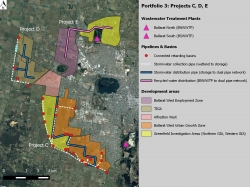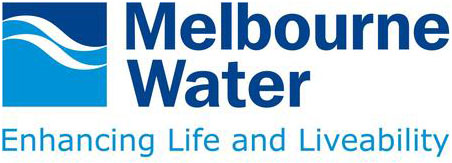resource library
Array
Ballarat City IWM Plan
Ballarat City IWM Plan Case Study
City of Ballarat
Published: 29 April 2020
Project Overview
The Ballarat IWM Plan is a commended example of integrated water management – with stakeholders working collaboratively to drive co-benefits across the whole water cycle. Working at the city-scale, the Plan sets out a vision and objectives for both established areas and new development areas, and tackles both urban and rural water management challenges. The Plan is underpinned by robust analysis of wide-reaching IWM projects, ranging from liveability improvements to long-term water service enhancements, the Ballarat IWM Plan demonstrates how a portfolio of projects can be co-delivered by stakeholders to offer multiple economic, environmental and community benefits. The Plan received an award for excellence from both Australian Water Association and Stormwater Victoria in 2018.
Drivers and Objectives
At the height of the millennium drought, Ballarat was a city in water crisis with dry lakes, brown recreational areas, dusty sporting grounds, floundering gardens and community event cancellations. It was a city struggling to maintain its basic drinking water needs. Over the past decade, the planning paradigm has shifted from crisis response to a systematic planning approach. This commitment to collaboration and sustainable planning has culminated in the community articulating a clear vision for the future and the development of an integrated water management plan for Ballarat City. Four key objectives were developed for the plan, each with a set of measurable indicators which were used to assess and compare IWM options:
1. Protect the health of receiving water environments
2. Provide secure and sustainable water services
3. Support liveable communities
4. Deliverable solutions
Organisations
Project Partners: Central Highlands Water, City of Ballarat, Corangamite Catchment Management Authority,
Department of Environment, Land, Water and Planning.
Consultants: E2Designlab, RMCG, ELM
Project Outcomes
Four project portfolios containing a total of 26 options were examined, where a concept design was developed for each option, allowing the costs and benefits to be quantified and scored. These benefits were also monetized over the
strategy period where possible so that a cost-benefit ratio could be determined through an economic analysis. The scored analysis and economic analysis were presented side-by-side to allow transparent decisions to be made.
• The consultative planning process was a key feature of the plan. It was highly constructive and provided significant insights into community aspirations and long-term improvements. The Ballarat community demonstrated a passionate interest in protecting their environment, waterways, lakes and green spaces.
• Based on the analysis, a recommended portfolio was assembled which then underpinned an action plan consisting of short, medium and long-term actions that would drive delivery of preferred options and the associated outcomes. The
recommended portfolio included:
*Naturalisation and enhancement of key sections of the Yarrowee River;
*Extension of the recycled water network to key industrial and open space users in established areas;
*Inclusion of passively irrigated trees throughout new development areas; and
*Large-scale planning of stormwater harvesting to inform the long-term investment plans for utilisation of stormwater as a regional resource.
Lessons Learnt
A clear and upfront methodology was pivotal to ensuring that decisions were based on evidence collated through concept design level analysis involving both technical and economic analysis.
• This process also demonstrated that societal and environmental needs could be better understood and effectively balanced, including assessment of monetary and non-monetary benefits as valuable evidence to support key decisions.
• The structure and implementation of the IWM Plan methodology ensured a collaborative and whole of system approach to leadership forged on creating direction, alignment and commitment. This made it possible for a large number of individuals to work together across team boundaries and different organisations to realise collective achievements.
• Appointing an Independent Chair to lead the project control group was also considered an important factor in establishing a collaborative leadership approach. It reinforced the principle of each project partner having an equal voice and ensured that balanced considerations were made.
Project Cost
$160,000
Timeframe
The IWM Plan was completed within a year and published in late 2017.
Contact
Celeste Morgan, E2Designlab, 03 9654 7274
W www.e2designlab.com.au
